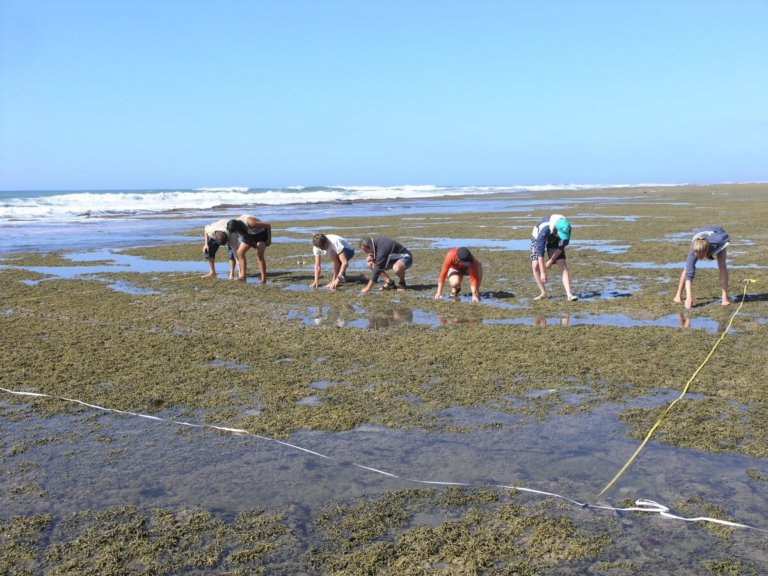
Last October, a consortium of 91 scientists from 40 countries warned the United Nations that we have just 12 years to keep global warming below 1.5 degrees Celsius. Failure could trigger a sequence of increasingly catastrophic effects. Other scientists have pointed out that even this is a conservative estimate.
The climate crisis is already wreaking havoc on our world. Three trillion tonnes of ice in Antarctica was lost in 2018 alone. According to the WWF, between 0.01 and 0.1 percent of all species will become extinct each year – this is 1,000-10,000 times higher than the natural extinction rate. Marine ecosystems are in dire straits as ocean temperatures and sea levels rise. From coral reefs to blue whales, researchers have found that heat waves are destroying ocean ecosystems.
At the same time, humans are damaging the environment in many other ways. In another assessment by the UN this year, experts found that the average abundance of native plant and animal life has fallen by 20 percent or more. Human activities such as poaching, farming, logging, mining and fishing are altering the natural world at a rate “unprecedented in human history.”
Now more than ever, scientific effort to save the environment have never been more important. While the situation is dire, there is still time left to prevent the worst from happening. Flora and fauna have historically shown impressive resilience – just look at the transformation of former nuclear disaster site Chernobyl or the success stories in ocean conservation efforts which have increased the population levels of sharks, humpback whales and north sea cods.

Source: Faculty of Science and Engineering, Macquarie University
Other scientific solutions are paving the way towards a better future too. Renewable energy is being set up faster than ever with 2018 seeing new solar photovoltaic capacity outstripping additions in coal, natural gas and nuclear power combined. Local communities are accelerating the transition towards low carbon energy – for example, the Scottish government succeeded in achieving its initial target of having 500MW of community and local owned energy.
Australia has some of the most exemplary efforts in climate action. There is a recovery plan to improve the conservation status of the endangered green turtles through research and monitoring. Dedicated threatened-species recovery teams have saved the western swamp tortoise, pigmy bluetongue lizard and eastern bristlebird from extinction. Last year, WWF-Australia and the Department of Parks and Wildlife’s plan to return rock-wallabies to West Australia was deemed a success.
Nonetheless, there are still many vulnerable and threatened ecosystems Down Under. It all depends on the next generation of environmental experts to continue the good work and ensure that we stay on the right course. You can start by advancing your knowledge with the postgraduate programmes at these Australian and New Zealand universities:
VICTORIA UNIVERSITY OF WELLINGTON, SCHOOL OF BIOLOGICAL SCIENCES
In New Zealand’s top ranked university for intensity of high-quality research (2018 Performance-Based Research Fund), students are well positioned to make a difference to the environment with its postgraduate offerings in conservation biology.

Source: Victoria University of Wellington, School of Biological Sciences
With the university ranked in the top 100 universities for Earth and Marine Sciences, the Master of Conservation Biology and Master of Marine Conservation are ideal for those seeking a world-class qualification in one of the most exciting student cities in the world.
Both one-year programmes are taught Master’s with no requirement for a supervisor in place prior to acceptance. As 180-point professional degrees, you’ll gain the scientific expertise needed to pursue conservation work in New Zealand and around the world.
And where better to advance your career in this field than Wellington – an international hotspot for biodiversity? At the School of Biological Sciences, you will learn and be inspired by world leaders in conservation practice and marine biology research, with no shortage of opportunities to gain practical experience and build valuable relationships with peers, university staff and future colleagues.
UNIVERSITY OF ADELAIDE, FACULTY OF SCIENCES
Four research intensive schools, several research centres and strong cross-institutional collaboration make up the Faculty of Sciences at the University of Adelaide. As one of the world’s top one percent of universities, this is where future leaders of science are nurtured and receive more than just a degree come graduation.

Source: University of Adelaide, Faculty of Sciences
Instead, students are trained to shape the future of science through the many innovative measures available here. World-class scientific expertise inform the many programmes offered, while well-equipped facilities allow high-quality training at honours, master’s and doctorate levels. Its new Bachelor of Applied Data Analytics (Environment) lets students gain statistical expertise in the age of Big Data to step into a critical role in this specialist field.
A unique offering in Australia, this degree combines big-data analytics training with decision science, as well as high-level skills in advanced data analysis, statistical inference, quantitative decision-making, and applying data analysis to develop organisational strategies for sustainable success.
SCHOOL OF ENVIRONMENT AND SCIENCE, GRIFFITH UNIVERSITY
As Australia’s first and only programme to be accredited by the Environment Institute of Australia and New Zealand, the School of Environment and Science is a fitting training ground for those seeking pioneering degree programmes in various environmental sectors.

Source: School of Environment and Science, Griffith University
The Bachelor of Science is an innovative, flexible and interdisciplinary programme across 13 majors, including chemistry and physics, through to materials science and marine biology. Innovation is a key focus here, which means students within the Environment and Science disciplines at Griffith will learn using cutting-edge resources and valuable hands-on experience on real projects.
Whether it’s a Bachelor of Environmental Science or Graduate Diploma of Research Studies in Environment or Master of Environmental Engineering and Pollution Control, all programmes are taught by award-winning teachers in state-of-the-art labs. In Australia’s first interdisciplinary environmental science school, students also benefit from its close ties with industry, gaining valuable hands-on experience in the field before graduating as well-rounded environmental scientists.
FACULTY OF SCIENCE AND ENGINEERING, MACQUARIE UNIVERSITY
From a Bachelor of Environment to Master in Sustainable Development to Master of Conservation Biology, the Faculty of Science and Engineering at Macquarie University has opportunities for everyone wishing to further develop their interests.

Source: Faculty of Science and Engineering, Macquarie University
The study of environmental sciences at Macquarie means using earth science, climate science, ecology, biology and chemistry to explore key biophysical systems and the impacts of human activity on those systems. It’s a distinctive learning experience enriched with active learning, field-based programmes and authentic assessment. Students also benefit from the department’s significant external impact and engagement with government, industry and community, both in Australia and internationally.
Both research and teaching is multidisciplinary (including science, sustainability and health) and incorporates a specific focus on environmental contaminants stored and transported in aerosols, dusts, ice, soils, sediments and water. Graduating from Macquarie means graduating work-ready and confident to take on the biggest environmental challenges of today.
*Some of the institutions featured in this article are commercial partners of Study International
Liked this? Then you’ll love these…
5 prominent schools in Earth and Ocean Sciences
Living Laboratories: 5 APAC leaders of environmental studies







